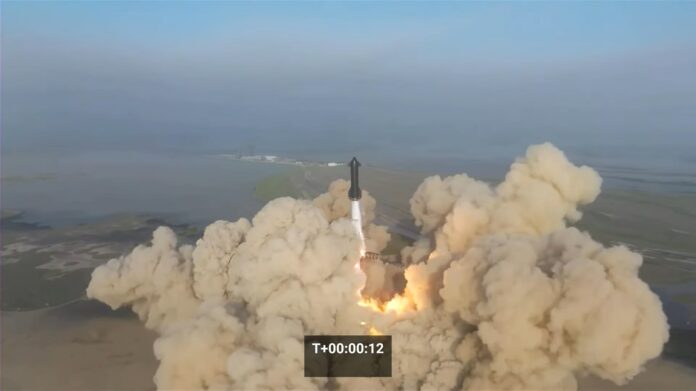Elon Musk’s SpaceX launched its Starship, the largest and most powerful rocket ever built, atop its powerful Super Heavy rocket for the first time on April 20. The uncrewed Starship lifted off from the company’s Starbase at Boca Chica, Texas, on an orbital test flight that came to an explosive end four minutes into the flight.
On April 17, the first launch of SpaceX’s rocket was halted because of a frozen valve. SpaceX teams worked to resolve a number of unidentified issues to make a second attempt possible this Thursday. The Starship successfully lifted off from the orbital launch pad for the first time. The vehicle cleared the pad and beach as Starship climbed to an apogee of approximately 39 km over the Gulf of Mexico – the highest of any Starship to date.
The vehicle experienced multiple engines out during the flight test. The spacecraft was unable to separate from the booster, and the rocket was intentionally destroyed by the Flight Termination System.
Despite the explosion, SpaceX will still see the launch as a success that can be built on. “With a test like this, success comes from what we learn, and we learned a tremendous amount about the vehicle and ground systems today that will help us improve on future flights of Starship,” the company said.
Elon Musk said the company learned a lot on Thursday and teased another test launch in a few months.
The Starship – consists of the first stage Super Heavy booster and the second stage Starship spacecraft – represents a fully reusable transportation system designed to carry both crew and cargo to Earth orbit, the Moon, Mars, and beyond.
Starship is planned to have a payload capacity of up to 150 metric tonnes to low Earth orbit in a fully reusable configuration and 250 metric tonnes when expended. It is nearly twice as powerful as NASA’s new deep-space rocket, the Space Launch System (SLS), which flew for the first time in November.
Two years ago, SpaceX won a nearly $3 billion contract from NASA to use Starship as a crewed lunar lander that would put the first woman and person of color on the Moon.
